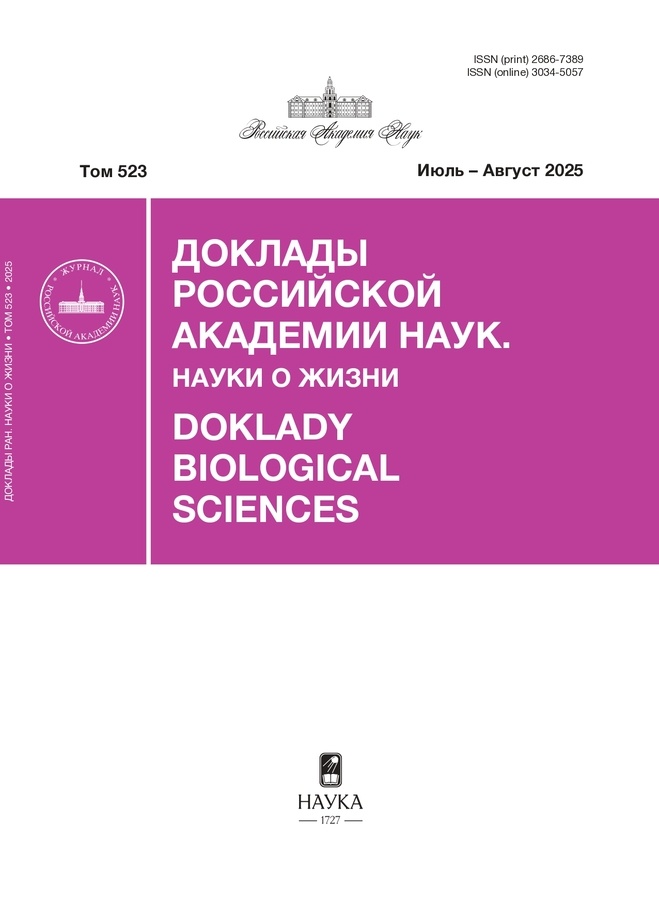Этрусский волк Canis etruscus (Canidae, Carnivora) из раннего плейстоцена Крыма (пещера Таврида)
- Авторы: Лавров А.В.1, Сотникова М.В.2, Гимранов Д.О.3, Мадурелл-Малапейра Х.4, Лопатин А.В.1
-
Учреждения:
- Палеонтологический институт им. А.А. Борисяка Российской академии наук
- Геологический институт Российской академии наук
- Институт экологии растений и животных Уральского отделения Российской академии наук
- Флорентийский университет
- Выпуск: Том 519, № 1 (2024)
- Страницы: 28-34
- Раздел: Статьи
- URL: https://gynecology.orscience.ru/2686-7389/article/view/651377
- DOI: https://doi.org/10.31857/S2686738924060049
- ID: 651377
Цитировать
Полный текст
Аннотация
Из раннеплейстоценового местонахождения в пещере Таврида (возраст около 1.5–1.8 млн лет) в Крыму описаны фрагменты челюстей среднеразмерного представителя псовых, включенные в гиподигм вида Canis etruscus Forsyth Major, 1877, обычного хищника поздневиллафранкской фауны Средиземноморья. Из Северного Причерноморья этот вид описан впервые. Изученные находки подтверждают ранее высказанное предположение о периодическом использовании пещеры Таврида в качестве логова и убежища псовыми и другими крупными хищниками.
Ключевые слова
Полный текст
Об авторах
А. В. Лавров
Палеонтологический институт им. А.А. Борисяка Российской академии наук
Email: djulfa250@rambler.ru
Россия, Москва
М. В. Сотникова
Геологический институт Российской академии наук
Email: djulfa250@rambler.ru
Россия, Москва
Д. О. Гимранов
Институт экологии растений и животных Уральского отделения Российской академии наук
Автор, ответственный за переписку.
Email: djulfa250@rambler.ru
Россия, Екатеринбург
Х. Мадурелл-Малапейра
Флорентийский университет
Email: djulfa250@rambler.ru
факультет наук о Земле
Италия, ФлоренцияА. В. Лопатин
Палеонтологический институт им. А.А. Борисяка Российской академии наук
Email: djulfa250@rambler.ru
академик РАН
Россия, МоскваСписок литературы
- Лопатин А.В., Вислобокова И.А., Лавров А.В. и др. Пещера Таврида – новое местонахождение раннеплейстоценовых позвоночных в Крыму // Доклады Академии наук. 2019. Т. 485. № 3. С. 381–385.
- Лавров А.В., Хантемиров Д.Р., Гимранов Д.О., Лопатин А.В. Chasmaporthetes lunensis (Hyaenidae, Carnivora) из раннего плейстоцена Крыма // Доклады Российской академии наук. Науки о жизни. 2022. Т. 507. С. 441–444.
- Gimranov D., Lavrov A., Prat-Vericat M. et al. Ursus etruscus from the late Early Pleistocene of the Taurida cave (Crimean Peninsula) // Historical Biology. 2023. V. 35. № 6. P. 843–856.
- Гимранов Д.О., Цзянцзуо Ц., Лавров А.В., Лопатин А.В. Mustela strandi (Mustelidae, Carnivora) из раннего плейстоцена Крыма // Доклады Российской академии наук. Науки о жизни. 2023. Т. 513. С. 528–532.
- Оксиненко П.В., Лавров А.В. История формирования пещеры Таврида – памятника фауны позвоночных позднего виллафранка и ее палеонтологическое значение // Вестник МГУ. Сер. 5. Геогр. 2021. № 1. С. 27–42.
- Azzaroli A. Quaternary mammals and the “end-Villafranchian” dispersal event – a turning point in the history of Eurasia // Palaeogeography, Palaeoclimatology, Palaeoecology. 1983. V. 44. № 1–2. P. 117–139.
- Martínez-Navarro B. Early Pleistocene faunas of Eurasia and hominin dispersals. In: Out of Africa I: The first hominin colonization of Eurasia / Eds Fleagle J.G., Shea J.J., Grine F.E. et al. Dordrecht: Springer, 2010. P. 207–224.
- Iannucci A., Mecozzi B., Sardella R. Beware of the “Wolf event” – remarks on large mammal dispersals in Europe and the Late Villafranchian faunal turnover // Alpine and Mediterranean Quaternary. 2023. V. 36. № 1. P. 75–90.
- Brugal J.-P., Boudadi-Maligne M. Quaternary small to large canids in Europe: taxonomic status and biochronological contribution // Quaternary International. 2011. V. 243. № 1. P. 171–182. https://doi.org/10.3390/quat1010006
- Koufos G.D. New material and revision of the Carnivora, Mammalia from the Lower Pleistocene locality Apollonia 1, Greece // Quaternary. 2018. V. 1. № 1. Art. 6. P. 1–38.
- Torre D. I cani villafranchiani della Toscana // Palaeontographia Italica. 1967. V. 63. P. 113–138.
- Tedford R.H., Wang X., Taylor B.E. Phylogenetic systematics of the North American fossil Caninae (Carnivora: Canidae) // Bulletin of the American Museum of Natural History. 2009. № 325. P. 1–218.
- Sotnikova M.V. Remains of Canidae from the Lower Pleistocene site of Untermassfeld // Monographien des Römisch-Germanisches Zentralmuseum. 2001. V. 40. P. 607–632.
- Del Campana D. I cani pliocenici di Toscana // Palaeontographia Italica. 1913. V. 19. P. 189–254.
- Sotnikova M., Rook L. Dispersal of the Canini (Mammalia, Canidae: Caninae) across Eurasia during the Late Miocene to Early Pleistocene // Quaternary International. 2010. V. 212. № 2. P. 86–97.
- Cherin M., Bertè D.F., Rook L., Sardella R. Re-defining Canis etruscus (Canidae, Mammalia): a new look into the evolutionary history of Early Pleistocene dogs resulting from the outstanding fossil record from Pantalla (Italy) // Journal of Mammalian Evolution. 2014. V. 21. P. 95–110.
- Bartolini Lucenti S., Rook L. A review on the Late Villafranchian medium-sized canid Canis arnensis based on the evidence from Poggio Rosso (Tuscany, Italy) // Quaternary Science Reviews. 2016. V. 151. P. 58–71.
- Bartolini Lucenti S., Bukhsianidze M., Martínez-Navarro B., Lordkipanidze D. The wolf from Dmanisi and augmented reality: review, implications, and opportunities // Frontiers of Earth Science. 2020. V. 8. Art. 131. P. 1–13. https://doi.org/10.3389/feart.2020.00131
- Martínez-Navarro B., Bartolini Lucenti S., Palmqvist P. et al. A new species of dog from the Early Pleistocene site of Venta Micena (Orce, Baza Basin, Spain) // Comptes Rendus Palevol. 2021. V. 20. Art. 17. P. 297–314.
Дополнительные файлы










